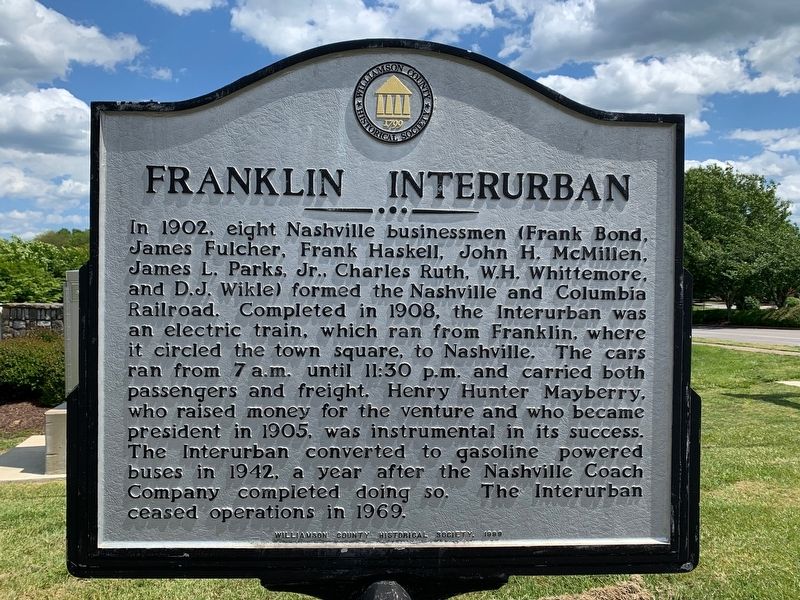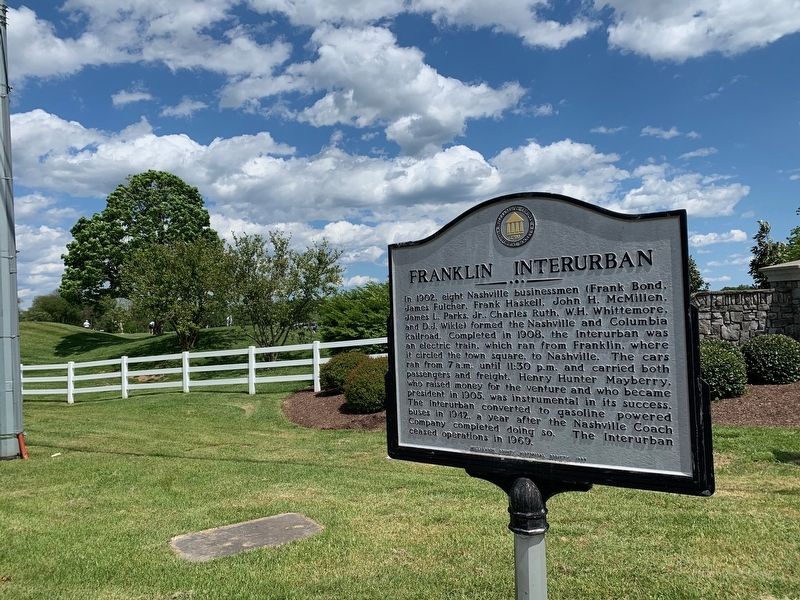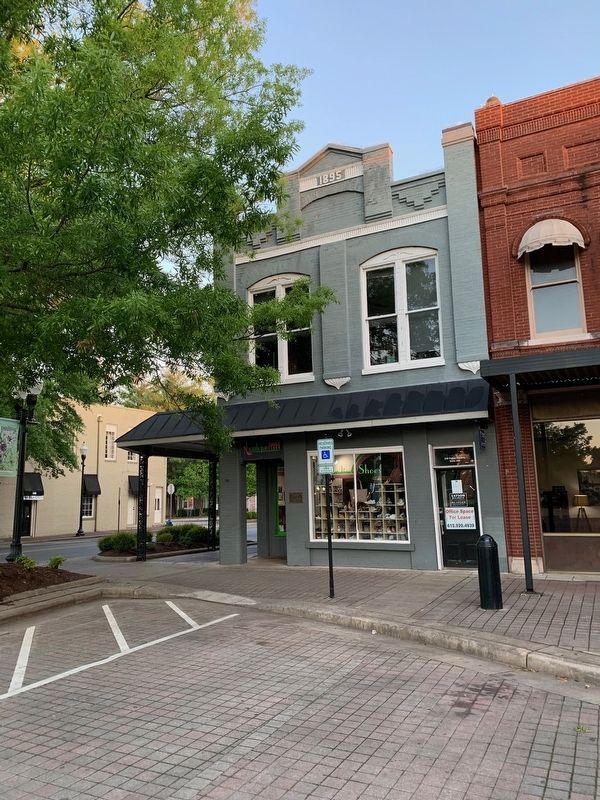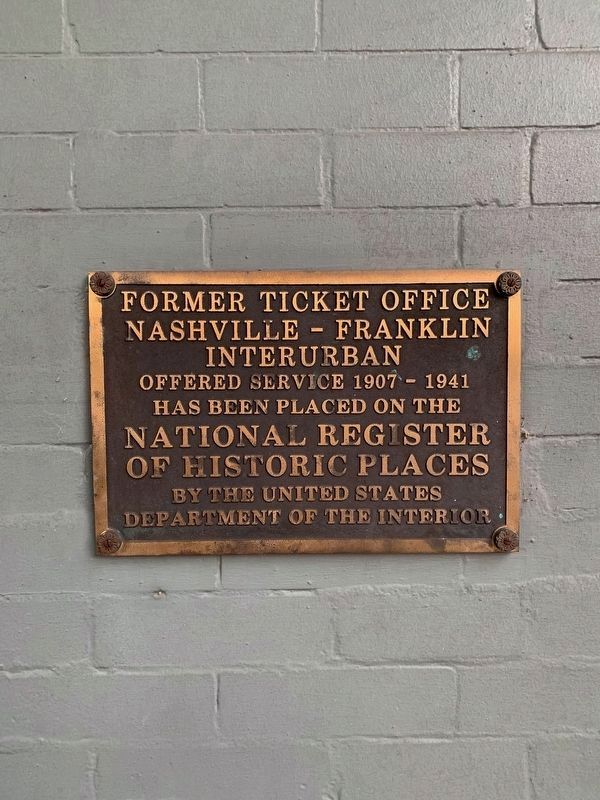Franklin in Williamson County, Tennessee — The American South (East South Central)
Franklin Interurban
Erected 1999 by Williamson County Historical Society.
Topics and series. This historical marker is listed in these topic lists: Industry & Commerce • Railroads & Streetcars. In addition, it is included in the Tennessee – Williamson County Historical Society series list.
Location. 35° 57.005′ N, 86° 50.925′ W. Marker is in Franklin, Tennessee, in Williamson County. Marker is at the intersection of Franklin Road (U.S. 31) and Legends Club Lane, on the right when traveling north on Franklin Road. Touch for map . Marker is at or near this postal address: 104 Legends Club Lane, Franklin TN 37069, United States of America. Touch for directions.
Other nearby markers. At least 8 other markers are within 2 miles of this marker, measured as the crow flies. First Presbyterian Church (within shouting distance of this marker); Glen Echo (approx. half a mile away); Battle Ground Academy (approx. half a mile away); Legacy Walk (approx. half a mile away); a different marker also named Battle Ground Academy (approx. 0.6 miles away); Roper's Knob in the Civil War / The Union Fortification of Roper's Knob (approx. 0.6 miles away); McEwen Cemetery (approx. 0.7 miles away); Ida Allen McKay (approx. 1.2 miles away). Touch for a list and map of all markers in Franklin.
Regarding Franklin Interurban. The Interurban Ticket booth location was in Franklin's Public Square (Third Avenue and Main Street).
Also see . . .
1. The Interurban: Franklin's First Major Connection to Nashville. (Submitted on May 10, 2020.)
2. Nashville Interurban Railway - Public Square | Franklin, Tennessee. (Submitted on May 10, 2020.)
3. Nashville History: Street Railways in Nashville. Scroll down for more information specific to Nashville - Franklin Interurban. (Submitted on May 10, 2020.)
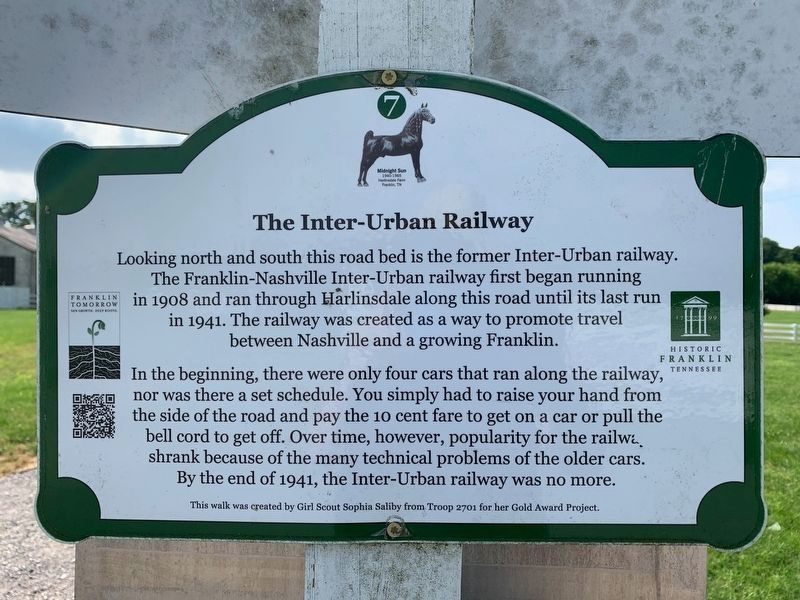
June 4, 2020
5. Harlinsdale Park Inter-Urban Railway Sign (near Harlinsdale car park, along road adjacent to arenas)
Looking north and south this road bed is the former Inter-Urban railway. The Franklin-Nashville Inter-Urban railway first began running in 1908 and ran through Harlinsdale along this road until its last run in 1941. The railway was created as a way to promote travel between Nashville and a growing Franklin.
In the beginning, there were only four cars that ran along the railway, nor was there a set schedule. You simply had to raise your hand from the side of the road and pay the 10 cent fare to get on a car or pull the bell cord to get off. Over time, however, popularity for the railway shrank because of the many technical problems of the older cars. By the end of 1941, the Inter-Urban railway was no more.
Credits. This page was last revised on June 11, 2020. It was originally submitted on May 10, 2020. This page has been viewed 305 times since then and 24 times this year. Photos: 1, 2, 3, 4. submitted on May 10, 2020. 5. submitted on June 11, 2020. • Devry Becker Jones was the editor who published this page.
